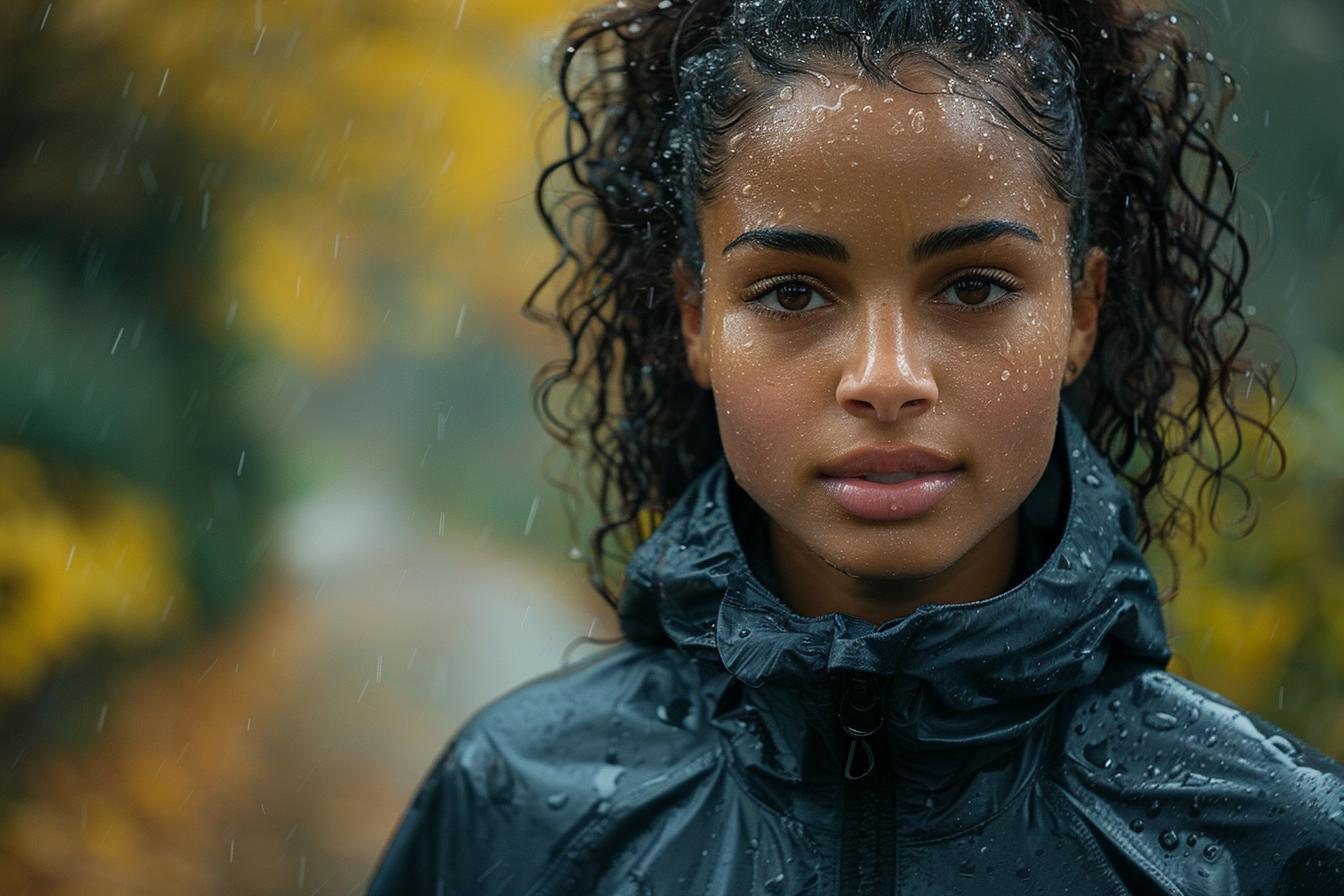Faced with the daily challenge posed by an unexpected downpour, a question often arises: is it better run or walk to be as little wet as possible in the rain? While some advocate a frantic run for shelter, others advocate measured walking as a superior technique for maintaining some semblance of dryness. But beyond opinions, what is really happening? This debate, far from being a simple question of personal preference, is at the heart of a complex meteorological context and a science which attempts to provide empirical answers. In this article, we’ll explore the role of different weather conditions and physics in our quest to stay dry, drawing on the research of scientist Franco Bocci and essential tips like choosing our waterproof clothing.
The vagaries of the weather
No one can deny the influence of meteorological factors on our rain experience. When threatening clouds gather, wind direction and downpour intensity become critical variables. A headwind combined with driving rain can turn a walk into a real wet ordeal, while a light drizzle with the wind at your back might only be a minor inconvenience. The decision to run or walk therefore requires a rapid analysis of the sky and the surrounding atmosphere.
The wooden block analogy
Imagine a block of wood being moved under a shower simulating rain. When you move it quickly, it absorbs less water on its upper side, but its sides absorb more humidity. Conversely, slow movement sees the exposed side more widely watered, but the sides remain relatively dry. This simple observation helps us to visualize the effects of movement : running will increase the humidity on our front and sides, while walking will concentrate the water above us.
The revelations of Franco Bocci’s study
Penetrating deeper into the scientific heart of the matter, Franco Bocci, through his research, determined that speed of movement is a crucial factor. If the rain falls strictly vertically, running helps minimize the amount of water received. However, when the rain begins to fall obliquely under the action of the wind, the calculation becomes more complex. Depending on the intensity of the rain and the angle of the wind, a speed modulation — not too fast, not too slow — could be the optimal strategy for staying dry.
What approach should you take?
The answer to the age-old question “Run or walk in the rain?” » ultimately depends on an alchemy between meteorological considerations and our own morphology. Some, due to their size or the natural speed of their movement, will benefit from running, while others will find walking a more effective way to reduce humidity. There is no universal answer, but rather an approach adapted to each individual and each climatic situation.
Never underestimate your allies: waterproof clothing
Finally, regardless of the movement tactic chosen, the importance of equipping yourself with waterproof clothing quality cannot be overstated. A good raincoat or sturdy umbrella can make the difference between arriving at your destination soaked or relatively dry. Investing in such protection is an essential defensive strategy in our fight against the elements.
Between running and walking in the rain, the optimal choice remains complex and depends on multiple parameters. By taking into account the weather conditions, the nature of the rain, the direction of the wind, our own speed of movement and not forgetting the vital importance of good rain gear, we can find strategies to stay as dry as possible during these unexpected confrontations with the rain.

